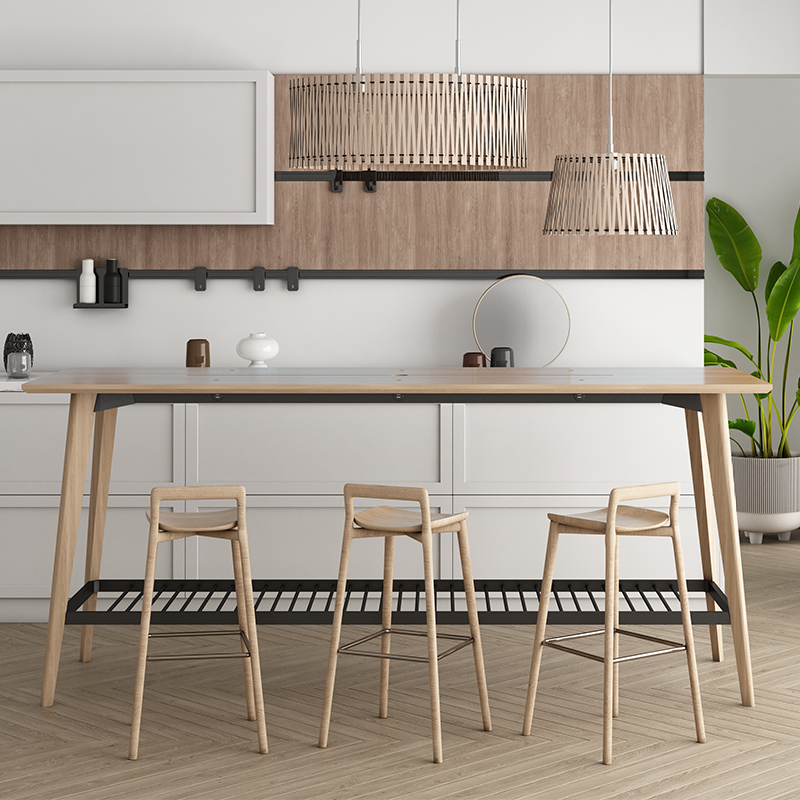Office Furniture Manufacturers
In a study by the Business and Institutional Furniture Manufacturers Association, four of the largest manufacturers of office furniture in the United States are listed below. These companies account for 5.2 percent of the world’s office furniture sales. HNI, Steelcase, and Herman Miller are the leading North American manufacturers, according to the survey.
Environmental impact of office furniture
Today, there is an increasing focus on the environmental impact of office furniture. Many of these furnishings use materials that contribute to indoor pollution, including PVC, benzidine dyes, ozone depleters, and certain hazardous phthalates. Many office furniture companies are taking steps to reduce their carbon footprints by using more sustainable manufacturing processes. They also have environmental management systems that adhere to stringent energy supply requirements.
The highest amount of carbon emissions from furniture production occurs during material processing. The use of toxic chemicals, heavy metals, and fluorine-containing compounds contribute to these emissions. This is why material processing equipment and facilities must be adjusted accordingly. Fortunately, many of the leading office furniture companies in China are taking steps to reduce their carbon emissions and other environmental impacts. Some of these companies have even begun to invest in renewable energy projects. Their solar panels and water recycling programs have had significant results in reducing their carbon emissions.
Sustainability is a key issue for office furniture manufacturers, and some have even begun to implement sustainability certification programs. The BIFMA, the trade association for the commercial furniture industry, has developed the ANSI/BIFMA e3 Furniture Sustainability Standard, which measures the sustainable practices of office furniture manufacturers. Those companies with a commitment to environmental responsibility will be recognized with a greener reputation for their products. There are many ways to determine the sustainability of office furniture.
Purchasing furniture made from recycled materials is another important way to reduce the environmental impact of office furniture. Currently, over 1.2 million office chairs and desks end up in landfills every year. Eighty to nine percent of office furniture ends up in landfills in the U.S. Approximately 9 million tons of office equipment and furniture are discarded annually in the US and Europe. If you decide to dispose of an office chair or desk, you should consider donation to local schools or charities instead of throwing it in a dumpster. A dealer will be able to advise you on recycling options in your area.
Office furniture can contribute to deforestation if not recycled properly. Recycling furniture is essential to avoiding the creation of landfills and contributing to a more sustainable workplace. It can also reduce the total cost of a project. Recycling office furniture is a great way to reduce waste and increase your business’s brand’s reputation.
Office furniture is a major decision for any business. It is essential to consider how your decision will affect the environment and the health of your employees. Whether you’re deciding on new designs for your workplace, or replacing the old ones, think about the environmental impact of your choices. Think about how modern designs can improve your employees’ moods and productivity.
Recycling your old office furniture is an excellent option to reduce your carbon footprint and reduce your monthly office furniture rental costs. There are even charitable organizations that can help you donate old office furniture. Some even take it to the local landfill. Selling your used office equipment is another option. Recycling will minimize the carbon footprint of your old office furniture while making sure the components are recycled.
Evolution of office furniture
Over the years, office furniture has gone through a lot of changes. Its focus has shifted from maximising output to improving employee productivity. It has also become more environmentally friendly. Office chairs have undergone many changes, including the introduction of wheels. The first office chair was a simple piece of wood. Later, the concept of ergonomics was introduced by Polish scholar Wojciech Jastrzebowski.
The mid-20th century saw the introduction of many innovations in office furniture. In 1947, Herman Miller’s design department created the first modern “Workstation”. By the 1960s, a number of companies were designing their workspaces with ergonomics and employee psychology in mind. The company began incorporating ergonomics into their products to ensure that employees were getting the most out of their time at work. The result was a dramatic change in office furniture.
In addition to the changes in the design of office furniture, the layout of office buildings changed. Private offices became more open, giving staff more space to work. Private offices also became more attractive, and employees began to place more importance on comfort. As a result, the quality of furniture became increasingly important. The launch of the Marcel Breuer tubular steel desk and the Eames lounge chair led to improved comfort and functionality.
In the 1960s, metal furniture became more popular, and moved from being rare to common in offices. Because metal was less expensive than wood, it became a popular choice. As the decade progressed, the use of metal furniture in offices became widespread, and metal desks and filing cabinets became increasingly common.
After the World War II, office furniture began to focus on ergonomics and proper lumber support. A number of innovations were introduced, including the Aeron chair and the Eames Lounge Chair. Other innovations included monitor arms and soft furnishings, which had previously only been seen in private offices. Furthermore, dedicated staff breakout areas were introduced.
The 1970s brought a radically different look to office furniture. The style of the office became more colourful, and desks were often made of wood and metal. They also contained four-line phones and file drawers. During this decade, employers began to recognize the importance of quality office furniture. During the 80s and 90s, cubicles and hot-desking became popular, and an emphasis on comfort and ergonomics was placed on the design.
The early writing table was a very basic piece of furniture. Later, it was combined with a chest of drawers. It was often hinged and could be raised to a comfortable height for the user. In addition, the desk could be folded into a unit when it was not in use. These desks became a popular choice for offices and law firms.
The development of technology led to major changes in the design of office furniture. The use of typewriters, for example, required different types of office desks. Typing was a physically demanding task and therefore office desks had to become steadier and more durable. The addition of solid wooden planks helped female secretaries feel safer while typing.
Multi-functionality of office furniture
Choosing multi-functional office furniture is one way to improve the workplace and increase employee productivity. This type of furniture allows for several functions in one space, which reduces eye strain and clutter. It’s especially useful in offices with limited space. Using the right combination of multifunctional pieces can also make an office feel more spacious, enhancing employee loyalty and productivity.
Choosing the right office furniture can be tricky. You want to maximize your budget while still getting the quality you need. Multi-functional products are often a good way to save money. For example, you can choose movable tables or workstations that can serve multiple functions. You can also opt for connected power solutions, such as Zoeftig’s Power Hub, which can charge several mobile devices at once.
Multi-functional office furniture also improves ergonomics. A good example is the Vengio table, designed by US-based Resource Furniture. It can serve as a dining table, desk, and a home office table. This type of furniture is perfect for people who work at different places. It reduces eye strain and helps people work in a more comfortable environment.
Another important consideration is the environmental impact of office furniture. Typically, eighty to ninety percent of office desks and chairs end up in landfills each year. In the United States, nine million tonnes of office equipment is disposed of each year. Reducing this waste can reduce the carbon footprint of companies.
Multi-functional furniture also saves space. A multifunctional sofa with floor-to-ceiling shelves can free up floor space. It is important to keep multi-functional furniture in order. Moreover, the furniture should match the room’s decor. Adding space saving furniture such as a Murphy bed is also helpful in making multifunctional spaces.
Investing in high-quality furniture is a smart way to increase employee productivity. In addition to improving employee motivation, high-quality office furniture also promotes a healthy work environment. This adds professionalism to the workplace and keeps employees motivated throughout the day. Hence, office ergonomics is an important consideration when selecting office furniture.

